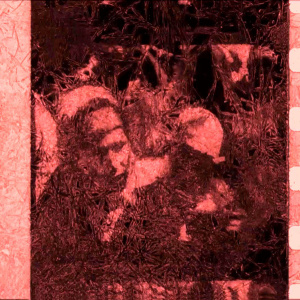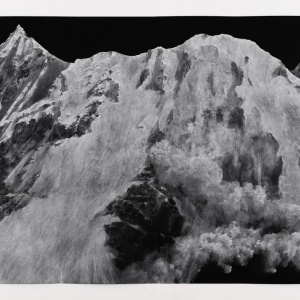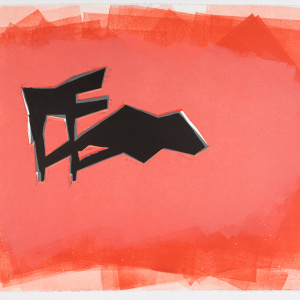Townsend Lectures
This very distinguished lecture series has been hosted as a public lecture by the Slade School of Fine Art, UCL since 1974. Although speakers have included eminent art critics, art historians, theorists and curators including Norbert Lynton, Richard Wollheim, Andrew Causey, Richard Cork and Norman Bryson, the primary aim of the William Townsend Memorial Lecture series is to encourage well known and influential artists to talk about their work to art students and the wider public.
“William Townsend occupies a particular role within twentieth century British art owing to his ability to try out, work through and assimilate what he needed from fast changing ideas and issues that animated painting before during and after the second world war. He was observer, practitioner, and commentator, a multiple role that gives him a special place in any record of the period.”
Frances Spalding
William Townsend was born in Wandsworth, London on the 23 February 1909, the son of William Lewis Townsend, a poetry-writing dentist. Both his parents were appalled by the carnage of the First World War and became pacifists and Quakers. One of his brothers, Peter Townsend, became a leading Sinologist, and an inspirational editor of Studio International, for which William Townsend wrote on Canadian Art.
William Townsend is known as a significant landscape painter. His work encompasses Italy, France, Egypt and Tunisia, but he is best known for his English and Canadian landscape paintings, as well as his contribution to art education in both these countries. Townsend entered the Slade School of Fine Art as a student in 1926 under the professorship of Henry Tonks, and completed his studies in 1930. He was awarded the Orpen Bursary and won the newly awarded Wilson Steer landscape prize for At Bashford which is in the UCL Art Museum collection.
He held his first solo show at the Bloomsbury Gallery, London in 1932. In 1935 he contributed to the Anti-Fascist Solidarity Exhibition in Soho Square, London, alongside artists such as Duncan Grant, Paul Nash, Eric Gill and Henry Moore. He became more involved in anti fascist, protests and politics declining an invitation by the Labour party to stand as a parliamentary candidate for Canterbury. With the start of the Second World War he enlisted as an officer in the Royal Artillery, before transferring to the Army Education corps. He married Mary Baxter in 1942, and his daughter Charlotte was born in 1945, his son Richard in 1951.
When Sir William Coldstream became the Slade Professor in 1949, William Townsend was appointed as a lecturer at the Slade. He moved to Kent, retaining a small flat in Bloomsbury. The landscape of the Weald of Kent was to occupy his painting in England for the rest of his life.
In 1962 he was invited to the Banff School of Fine Arts in Alberta, in the Canadian Rockies and started painting the Canadian landscape. He was later appointed as a visiting professor, then head of painting at the Banff School.
In 1968 he was appointed an individual chair as professor at the Slade with responsibility to develop a postgraduate Fine Art course, which continues in the form of the MFA and MA in Fine Art at the Slade to this day.
William Townsend died on the 4th of July 1973 in Banff, Alberta, Canada aged 64.
The Tate Gallery held a retrospective of his work in 1976, and published extracts from his journals edited by Andrew Forge as: The Townsend Journals: an artist’s record of his times. The Tate Gallery holds several of his paintings in its collection.
Thanks to the generosity of William Townsend’s family, the Slade is able to continue to represent the legacy of an artist and educator who made a major contribution to Fine Art in England and Canada through the William Townsend Memorial Lectures.
Dryden Goodwin, Reader in Fine Art Media and Head of Print, Chair of the William Townsend Memorial Committee
List of Speakers
|
2021 |
Zineb Sedira |
Standing Here Wondering Which Way To Go |
|
2018 |
Tacita Dean |
|
|
2016 |
William Kentridge |
Enough + More Than Enough |
|
2014 |
Phyllida Barlow |
Phyllida Barlow |
|
2012 |
Stan Douglas |
Stan Douglas |
|
2010 |
John Hilliard |
Studio as Site, Set and Subject |
|
2008 |
Derek Boshier |
From Doris to the Cocaine Cowboy |
|
2005 |
Cornelia Parker |
One Day this Glass will Break |
|
2003 |
Rachel Whiteread |
Major Projects and Other Works |
|
2002 |
Lawrence Weiner |
Aesthetics, Ethics, Etc |
|
1999 |
Norman Bryson |
Seurat and the Scene of Drawing |
|
1997 |
Michael Craig Martin |
Post-Painting Painting and Other Thoughts |
|
1996 |
Bridget Riley |
Painting Now |
|
1995 |
Bruce McLean |
Out of my Head – Out of my Mind |
|
1994 |
Peter Greenaway |
The Stairs (transcript available via UCL Special Collections) |
|
1994 |
Antony Gormley |
Raising Heavy Matters |
|
1992 |
Thomas Crow |
Art Historian and Contemporary Art |
|
1991 |
Richard Hamilton |
The Hard Copy Problem |
|
1990 |
Richard Deacon |
Ambiguous Gestures |
|
1989 |
Susan Hiller |
Reflections |
|
1988 |
Declan McGonagle |
Art: The Issue of Place |
|
1988 |
Anthony Hill |
A Short Space from Time |
|
1986 |
Bernard Cohen |
Making Art & Killing Culture |
|
1985 |
Richard Cork |
Bomberg and the Bomb Store |
|
1984 |
Andrew Causey |
Classical and Romantic in the Art of Wydham Lewis |
|
1983 |
Richard Rogers |
The Crisis of Public Space and the Language of Architecture |
|
1982 |
Anthony Caro |
Space, Place and Sculpture |
|
1981 |
Howard Hodgkin |
How to be an Artist (read an edited transcript on Howard Hodgkin's website) |
|
1980 |
Reg Butler |
The Venus of Lespugne and other Naked Ladies |
|
1979 |
Kenneth Martin |
Chance and Order |
|
1978 |
Andrew Forge |
Transatlantic Reflections: Some Remarks on Art in England |
|
1977 |
Richard Wollheim, FBA |
Adrian Stokes: Critic, Painter, Poet |
|
1976 |
Sir Leslie Martin |
Aspects of Art and Architecture: 40 Years in Retrospect |
|
1975 |
Norbert Lynton |
Art and its Publics |
|
1974 |
Robyn Denny |
Art and the State, and the State of Art |



